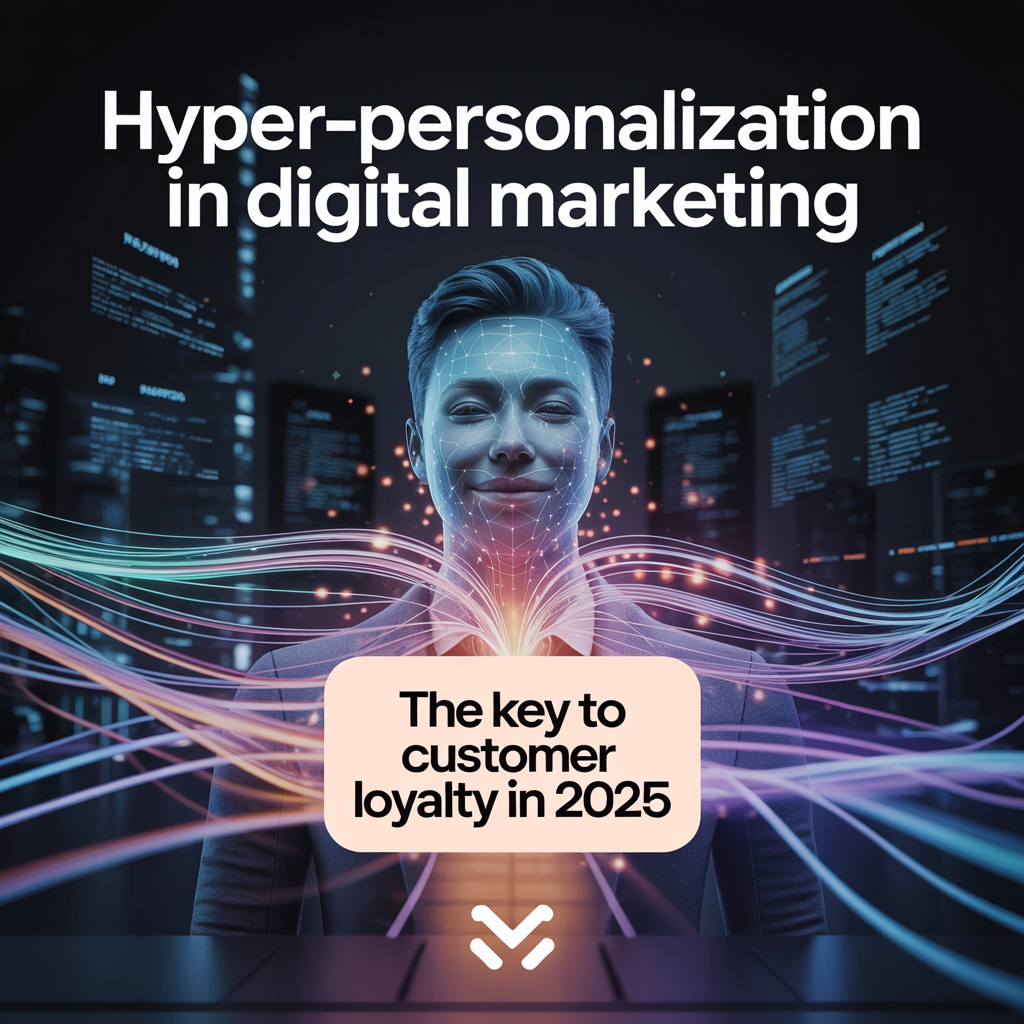Hyper-Personalization in Digital Marketing: The Key to Customer Loyalty in 2025

Introduction
The era of one-size-fits-all marketing is long gone. In today’s digital-first economy, buyers expect personalized, relevant, and timely experiences across every touchpoint. Hyper-personalization takes this concept to the next level by using AI, predictive analytics, and real-time customer data to craft marketing that feels truly individual.
In 2025, brands that fail to adapt risk losing customer loyalty, while those that embrace hyper-personalization can expect higher engagement, increased retention, and stronger ROI.
In this article, we’ll cover:
- What hyper-personalization means in digital marketing
- The challenges marketers face in implementing it
- Proven strategies to leverage personalization effectively
- Emerging trends shaping the future of hyper-personalization
What is Hyper-Personalization and Why It Matters
Hyper-personalization goes beyond simply adding a customer’s name to an email. It uses behavioral, demographic, contextual, and intent data to deliver experiences that adapt to each customer’s journey.
📊 According to a McKinsey study, 71% of consumers expect personalized interactions and 76% get frustrated when they don’t receive them. In B2B, the stakes are even higher—decision-makers expect the same seamless, relevant experiences they enjoy in B2C.
For example, instead of sending the same product recommendation to all customers, hyper-personalization enables:
- Dynamic content tailored to past browsing or purchase behavior
- Predictive offers based on customer lifetime value (CLV)
- Real-time engagement such as chatbots that adapt conversations based on context
Hyper-personalization matters because it builds trust, relevance, and loyalty—key differentiators in a crowded digital marketplace.
Challenges in Hyper-Personalization for Digital Marketers
While the benefits are clear, achieving hyper-personalization isn’t without hurdles:
- Data Silos & Fragmentation
- Many organizations still struggle with disconnected data across CRM, marketing automation, and analytics tools.
- Without a unified customer profile, personalization efforts remain limited.
- Privacy & Compliance
- With stricter regulations like GDPR and CCPA, balancing personalization with privacy has become a delicate act.
- Customers want personalization but also transparency and control over their data.
- Technology Overload
- Marketers face a crowded Martech stack. Choosing the right tools for personalization—CDPs, AI engines, automation platforms—can be overwhelming.
- Scalability Issues
- Personalizing for one customer is easy. Doing it across thousands or millions, in real-time, requires advanced systems and strategies.
- Organizational Alignment
- Hyper-personalization isn’t just a marketing function. It requires cross-team alignment with sales, product, and customer success.
Proven Strategies to Leverage Hyper-Personalization
Here’s how digital marketers can succeed in 2025:
1. Build a Unified Customer Data Platform (CDP)
A CDP consolidates data from all touchpoints into a single view of the customer. This enables marketers to segment audiences and activate campaigns based on real-time insights.
- Example: Using Segment or BlueConic to unify behavioral and transactional data.
2. Leverage Predictive Analytics & AI
AI enables marketers to predict intent and deliver content before the customer even asks. Predictive lead scoring, churn prediction, and next-best-offer engines all fuel hyper-personalization.
- Example: Netflix’s recommendation engine predicts what users want to watch next with remarkable accuracy—brands can do the same with product recommendations.
3. Personalize Across the Customer Journey
True hyper-personalization extends beyond emails—it spans:
- Website experiences (dynamic landing pages based on visitor profile)
- Paid ads (tailored creative for micro-segments)
- Mobile push & in-app messaging
- Customer service (AI-driven support tailored to past interactions)
4. Automate with Real-Time Triggers
Trigger-based marketing ensures that communication is contextual and timely.
- Cart abandonment emails sent within 15 minutes
- Product upsell offers right after purchase
- Chatbots that adapt to customer mood and behavior
5. Focus on Privacy-First Personalization
Marketers must adopt consent-driven personalization. Transparency, first-party data collection, and zero-party data (information willingly shared by customers) will be critical.
Trends and the Future of Hyper-Personalization in 2025
1. Rise of Generative AI
Generative AI is transforming content personalization—automatically generating personalized email copy, landing pages, and ad creatives at scale.
2. Voice & Conversational Marketing
With voice assistants and AI chatbots, personalization will become dialogue-driven, creating two-way, human-like interactions.
3. Real-Time Omnichannel Personalization
Marketers will need to deliver consistent experiences across email, web, social, SMS, and in-store, adapting messaging in real time.
4. Ethical Personalization
Consumers are increasingly concerned about data misuse. Brands that practice responsible personalization—balancing value with respect for privacy—will win loyalty.
5. Predictive Customer Loyalty Programs
Instead of static rewards, AI-driven loyalty programs will adapt offers based on individual preferences and predicted behaviors.
Pro Tips & Bonus Insights
- Test and iterate: A/B testing and AI-driven experimentation can refine personalization tactics.
- Go beyond purchase behavior: Consider psychographics, motivations, and values.
- Integrate ABM practices: For B2B, hyper-personalization should align with account-based marketing strategies for high-value clients.
Conclusion
Hyper-personalization is no longer a “nice-to-have”—it’s a must-have strategy in digital marketing. As customer expectations rise, delivering experiences that feel unique and relevant will be the deciding factor between brand loyalty and churn.
The brands that succeed in 2025 will be those that harness data, AI, and privacy-first strategies to personalize at scale while staying authentic and transparent.
👉 Ready to transform your personalization strategy?
Connect with us and explore how you can build meaningful, loyal customer relationships through digital innovation.
- Art
- Causes
- Crafts
- Dance
- Drinks
- Film
- Fitness
- Food
- Juegos
- Gardening
- Health
- Inicio
- Literature
- Music
- Networking
- Otro
- Party
- Religion
- Shopping
- Sports
- Theater
- Wellness


